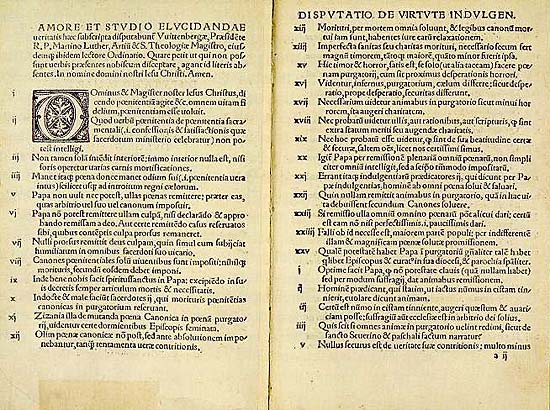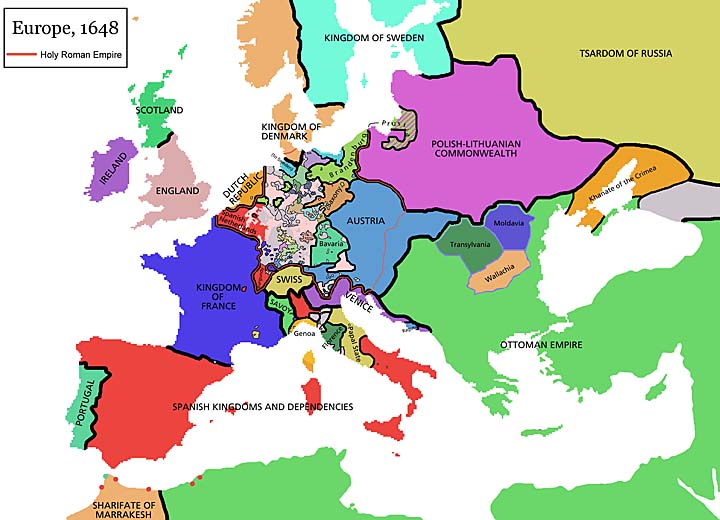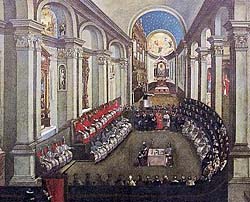
Unit 2: How Trade and Travel Changed the World
Lesson F: Renaissance and Reformation
Activity 8: Impact of the Reformation
A key element in helping spread Reformation ideas was the printing press. The publication of material outlining claims against the church and proposed reforms helped gain support for leaders of the Reformation. Authors and publishers of anti-church information risked being excommunicated, which suspended or expelled them from the church. Innovations in printing helped spread written information about reform during this era of change in Europe, helping the Renaissance and Reformation fuel future movements such as the Scientific Revolution and Enlightenment.

Luther's 95 Theses [1]
Many of the effects of the Protestant Reformation weakened the influence of the Roman Catholic Church. Throughout Europe many individuals such as Luther and John Calvin gathered support for reform. New Protestant Christian religions such as Lutheranism, Calvinism, and the Puritan Movement emerged from Europeans' complaints about the church, and divisions between reformers themselves. The Roman Catholic Church also acted to satisfy calls for change within their own practices and leadership. The Roman Catholic or "Counter" Reformation began in the mid-16th century after Roman Catholic leaders met at the Council of Trent in 1545. Leaders addressed church corruption and the abuse of religious concepts, and many different religious orders, such as the Jesuits, were created to more strictly enforce religious policies.
The effects of the Reformations on European society were dramatic. The permanent division between members of the various Christian religions split society. Christian reform created new religious officials, policies, and practices.
Perhaps the most significant effect was the political tension between states that resulted in war. The Thirty Years War of 1618 to 1648 was the most destructive conflict Europe had seen in centuries. The Peace of Westphalia ended the war and gave German princes the right to choose their state's religion. The power of the Roman Catholic Pope and Holy Roman Empire was significantly weakened, and the division between Protestants and Roman Catholics was created. Finally, a more secular outlook on the physical and political world was first introduced.

Map of Europe After the Peace of Westphalia [3]
Page Notes:
[1] Source: This image from http://en.wikipedia.org/wiki/File:95Thesen.jpg is in the public domain because its copyright has expired.
[2] Source: This image from http://en.wikipedia.org/wiki/File:Council_of_Trent.JPG is in the public domain because its copyright has expired.
[3] Source: This image from http://en.wikipedia.org/wiki/File:Europe_map_1648.PNG is licensed under the terms of the GNU License Agreement.



